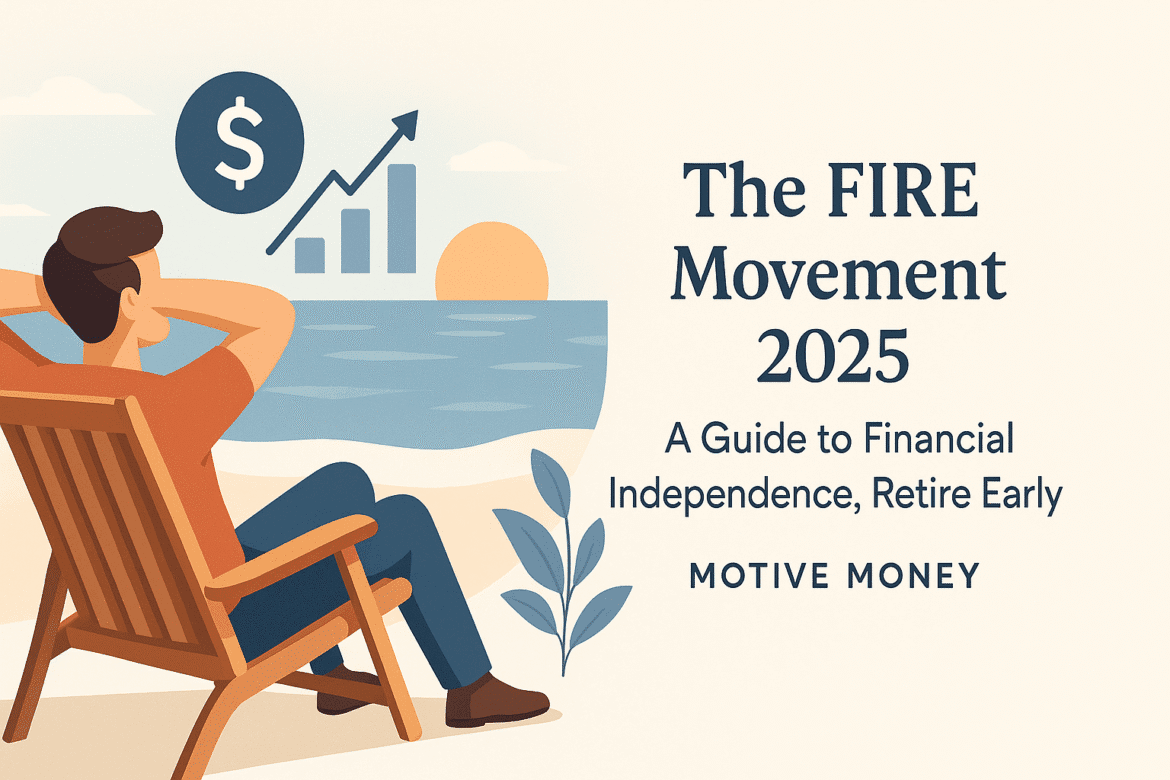The traditional path of working until your mid-60s is no longer the only option. A growing number of people are embracing the FIRE movement (Financial Independence, Retire Early), a lifestyle design centered around aggressive saving and investing to achieve financial independence, retire early. In 2025, this movement continues to gain momentum, offering a compelling blueprint for those who dream of escaping the 9-to-5 grind and gaining full control over their time and finances sooner rather than later.
The core premise of FIRE is simple: dramatically increase your savings rate to accumulate enough investment assets to cover your living expenses, allowing you to “retire” from traditional employment decades ahead of schedule. This isn’t about stopping work altogether for everyone; for many, it means having the option to pursue passions, travel, volunteer, or work on projects they truly love, without financial pressure. It’s about designing a life on your own terms.
This comprehensive guide will serve as your introduction to the FIRE movement in 2025, breaking down the fundamental principles, exploring key early retirement strategies, and highlighting the role of frugal living FIRE techniques and passive income generation. Whether you aim for full early retirement or simply greater financial flexibility, understanding FIRE can illuminate a powerful financial freedom path.
What is the FIRE Movement?
FIRE stands for Financial Independence, Retire Early.
- Financial Independence (FI): Reaching a point where your passive income from investments covers all your living expenses. You no longer need to work for money.
- Retire Early (RE): The “retire early” part is often a consequence or a choice once FI is achieved. For some, it means traditional retirement; for others, it means pursuing passion projects, starting businesses, or living a “mini-retirement” lifestyle.
The generally accepted “rule of thumb” for achieving FI is to save 25 times your annual expenses. This is based on the “4% Rule” (or Safe Withdrawal Rate), which suggests you can safely withdraw 4% of your portfolio annually without running out of money.
Key Pillars of the FIRE Movement
- Aggressive Saving Rate:
- This is the cornerstone. While traditional advice might suggest saving 10-15% of your income, FIRE proponents aim for 50% or even 70%+.
- The higher your savings rate, the faster you achieve FI.
- Increased Income:
- Beyond cutting expenses, increasing your income through raises, side hustles, or a higher-paying job significantly accelerates your journey.
- More income means more money available to save and invest.
- Mindful/Frugal Living (Frugal Living FIRE):
- This isn’t about deprivation, but about intentional spending aligned with your values. It means cutting out unnecessary expenses and finding cost-effective ways to live.
- Examples: cooking at home, minimizing subscriptions, choosing experiences over material possessions, finding affordable housing.
- Strategic Investing:
- Once you save, you must invest your money wisely to make it grow. Low-cost index funds and ETFs are popular choices within the FIRE movement for their diversification and minimal fees.
- The goal is to build a portfolio that generates enough passive income (dividends, interest, rental income) to cover your living expenses.
- Real Estate Investing for Beginners 2025: Your First Steps Beyond Homeownership
- Investing in ETFs vs. Mutual Funds: Which is Better for You?
Types of FIRE Paths
The FIRE movement isn’t monolithic; it has several variations:
- Traditional FIRE: Aggressively save to cover all expenses, then fully retire from work.
- Lean FIRE: Achieving FI with a lower annual expense budget (e.g., $20,000-$30,000 per year). Requires even more extreme frugality.
- Fat FIRE: Achieving FI with a significantly higher annual expense budget (e.g., $100,000+ per year), allowing for a more luxurious retirement.
- Barista FIRE: Saving enough to cover most expenses, but continuing to work part-time (e.g., as a barista) for health insurance or to cover discretionary spending.
- Coast FIRE: Saving enough in your early career that your investments will naturally grow to cover retirement expenses by traditional retirement age, without needing further contributions. This allows for less aggressive saving later.
Steps to Start Your Financial Freedom Path in 2025
- Calculate Your FI Number: Determine your annual expenses and multiply by 25. This is your target investment portfolio size.
- Track Your Spending: Use budgeting tools to understand where your money goes.
- Optimize Expenses: Identify areas to cut costs and increase your savings rate.
- Increase Income: Explore side hustles, negotiate raises, or seek higher-paying roles.
- Automate Savings and Investments: Set up automatic transfers to your investment accounts immediately after payday.
- Invest Wisely: Focus on low-cost, diversified investments like index funds or ETFs.
- Review Progress Regularly: Adjust your plan as your income, expenses, and goals change.
Is FIRE Right for You?
The FIRE movement is not for everyone. It requires discipline, patience, and a willingness to make financial sacrifices in the short term for long-term gain. However, for those who commit to it, the reward of financial independence, retire early can be transformative, offering unparalleled freedom and flexibility in life.
Conclusion: Paving Your Way to Financial Freedom
The FIRE movement in 2025 offers a powerful and increasingly popular financial freedom path for those determined to take control of their financial destiny. By committing to aggressive saving and investing strategies, embracing frugal living FIRE principles, and focusing on generating passive income, you can significantly shorten your working career and achieve your dream of financial independence, retire early.
It’s a journey that demands intentionality and dedication, but the ability to live life on your own terms, free from financial constraints, is a profound reward that makes every effort worthwhile.
Discover more from Motive Money
Subscribe to get the latest posts sent to your email.
